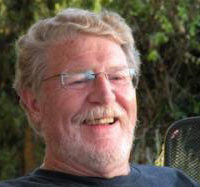
“It is not unlike Sherlock Holmes and the dog that didn’t bark. It’s not just that we can’t prove a sarin attack, it is that we are not seeing what we would expect to see from a sarin attack,” said Jean-Pascal Zanders, former senior research fellow at the European Union’s Institute for Security Studies.
Holmes, Sir Arthur Conan Doyle’s fictional detective, cracked the case of the “Silver Blaze” by concluding that a murder and theft had to be an inside job because the watchdog never barked. It would be a good idea to keep this in mind when it comes to determining whether the Syrian government used poison gas against its opponents. And since the Obama administration is citing “proof” that the chemical warfare agent sarin was used by the Syrian government as the basis for escalating its intervention in the two-year old civil war, this is hardly an academic exercise.
Like Holmes, start with the facts.
According to French, British, Israeli and U.S. intelligence services, the regime of President Bashar al-Assad used sarin on at least 10 different occasions, resulting in the deaths of some 100 to 150 people. The “proof” for this is based on tissue and blood samples-British intelligence claims contaminated soil as well-from victims of the attacks. The samples were gathered in Syria, taken to Turkey, and turned over to the intelligence services and the United Nations.
The French newspaper Le Monde also reports that one of its reporters suffered blurred vision and nausea during one of these attacks, and the paper has published photos of purported victims being treated. There is, as well, a video of insurgent fighters donning gas masks. Besides the photos and video images, no evidence has been released to the press.
What about the beast itself?
The chemical was invented in Germany in 1938 as a pesticide. It is a nerve agent-as opposed to a “blistering agent” like mustard gas-and kills by blocking the body’s ability to control the chemical that allows muscles to turn themselves off. As the Office of Emergency Management puts it, “Without an ‘off switch,’ the glands and muscles are constantly being stimulated. They may tire and no longer be able to sustain breathing function.”
You suffocate.
Sarin is a colorless and odorless liquid, and it is “volatile”-that is, it quickly turns into a gas. Even in small concentrations, it is very deadly and can kill within minutes. It is absorbed through the skin or lungs and can contaminate clothing for up to 30 minutes. The British created a far deadlier and less volatile variant of sarin called V. It was an errant VX cloud from the U.S. Army’s Dugway Proving Ground that killed some 6,000 sheep in Utah’s Skull Valley in 1968.
Many countries have chemical weapons, but some, including the U.S. and Russia, are in the process of destroying them under the 1993 Chemical Weapons Convention. Sarin is considered a “weapon of mass destruction” under UN Resolution 687, although that label is a bit of a misnomer. It is certainly bad stuff. In 1988 Saddam Hussein used sarin to kill several thousand Kurds in the city of Halabja, and sarin and mustard gas were used during the Iran-Iraq War (1980-88). It is estimated that gas inflicted about 5 percent of Iran’s casualties in that war.
But poison gas is generally considered more of a nuisance than a weapon capable of creating large numbers of dead and wounded. It only accounted for 1 percent of the casualties in World War I, and doesn’t compare with a real weapon of mass destruction. The two nuclear bombs dropped on Hiroshima and Nagasaki killed some 250,000 people and injured hundreds of thousands more. And by today’s standard of nuclear weapons, those bombs were tiny.
While chemical weapons are scary, they are no more indiscriminate in what they kill than 1,000 lb bombs and cluster weapons, indeed much of the arsenals of modern armies. Small arms, for instance, inflict 90 percent of civilian casualties.
In any case, President Obama made the use of chemical weapons in the Syrian civil war his “red line,” a barrier he claims has now been breached.
Has it?
Philip Coyle, a senior scientist at Washington’s Center for Arms Control and Non-Proliferation has his doubts, telling the McClatchy newspapers that from what he has observed of the evidence, it doesn’t look as if sarin was used.
Jean-Pascal Zanders, former head of the Chemical and Biological Warfare Project at the Stockholm international Peace Research Institute questions some of the reports in Le Monde. For instance, the newspaper reports that victims traveled a long distance for medical care, which he suggests is unlikely if sarin was used. He also points out there are no reports of medical workers dying from exposure to victims, even though sarin clings to clothing for up to a half hour. He also questions a Le Monde report that one victim was given 15 shots of the antidote atropine, a dose that would surely have been fatal.
“In a world where even the secret execution of Saddam Hussein was taped by someone, it doesn’t make sense that we don’t see videos, that we don’t see photos showing bodies of the dead, the reddened faces and the bluish extremities of the afflicted,” he says.
While the French claim they have an “unbroken chain of custody” from the attack to the lab, even experts who believe the intelligence reports disagree. Greg Thielmann of the Arms Control Association says that while his “guess” is that the poison gas was used, there is a lack of “continuous chain of custody for the physiological samples from those exposed to sarin.”
One “Western diplomat” told the Washington Post, “The chain-of-custody issue is a real issue,” in part because the “red line” speech was an incentive to “prove” chemical weapons had been used. As Rolf Ekeus, a Swedish scientist who headed the UN’s weapons inspections in Iraq, said, “If you are the opposition…you have an interest in giving the impression that some chemical weapons have been used.”
According to a report in the New York Times, samples gathered in Aleppo were carried by a civilian courier from that city to the Turkish border town of Reyhanli, “a journey that took longer than expected. At one point,” reports the Times, “the courier forgot the blood vials, which were not refrigerated, in his car. Ten days after the attack, the vials arrived at the Turkish field office for the Syrian American Medical Society.”
In short, the samples were hardly secured during the week and a half it took them to get to Turkey, and they were delivered into the hands of insurgency supporters.
Carla del Ponte, former war crimes prosecutor and currently a member of the UN Commission of Inquiry on the use of chemical weapons in Syria, says it was the rebels, not Syria, who are the guilty party.
Damascus refuses to allow the UN to test for chemical weapons inside of Syria, which certainly raises suspicions. On the other hand the UN has not exactly been a neutral bystander in the civil war. UN General Secretary Ban Ki-moon has demanded “unfettered access”-an unlikely event in the middle of a war-and while sharply condemning Iran and Russia for supplying arms to Assad, has muted such criticism of Qatar and Saudi Arabia, the main arms suppliers for the rebels.
There is a certain common sense factor in all this as well. Would the Assad government really “cross the red line” in order to kill 150 people?
When U.S. Special Forces invaded Syria in 2008 to attack what they claimed was a “terrorist gathering”-it turned out to be carpenters and farmers-the Syrians protested, but did nothing. At the time, Syria’s Foreign Minister told Der Speigel that Damascus had no wish to “escalate the situation” with the U.S. “We are not Georgia” he added, an illusion to Georgia’s disastrous decision to pick a fight with Russia in the 2008 Russian-Georgian war.
Nor has Syria responded to three bombing raids by Israel, knowing that challenging the powerful Israeli air force would be suicidal.
Western intelligence services want us to believe that Damascus deliberately courted direct U.S. intervention for something totally marginal to the war. Maybe the Assad regime has lost its senses. Maybe some local commanders took the initiative to do something criminal and dumb. Maybe the whole thing is a set-up.
Shouldn’t we wait until the dog barks?
This article was reposted from Dispatches from the Edge.
Photo: Flickr (CC)










